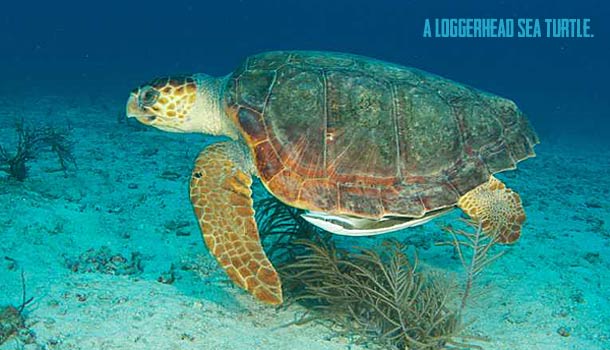Cocoa Beach and beaches just north and south of us are very important to the five endangered or threatened sea turtles in the world. The area is prime real estate for the turtles to come on shore, nest (drop eggs) and for their hatchlings to crawl to the sea.
While leatherbacks, green, loggerhead, hawksbill and kemps ridleys nest on our beaches, the loggerheads (threatened) are most common followed by the green (endangered) and leatherbacks (endangered). As a matter of fact, the coast of Brevard County is the largest nesting area in the world for loggerhead and green sea turtles.
Sea turtle season is May 1 to Oct. 31, and that means every person who lives and plays on the beach must do their part in making sure the sea turtles have a successful nesting season. Their lives and their species survival depend upon us.
One of the most important ways to help is at night: lights out on the beaches. Artificial lights can discourage females from making their way out of the water and onto the beaches to nest. Then months later, when the hatchlings dig their way to the surface of the sand their only beacon should be the moonlit ocean to guide them to the sea, not to the porch light on a condo. They are young and don’t have enough “fuel” for a course correction if they go inland instead of toward the ocean.
Once the female turtle crawls on the beach, she begins to dig her nest usually in the higher portions of the beach well away from the tide. If you see a female, stay away from her. If you see a mound while visiting the beach, stay away from it as well, and do not dig, under any circumstances. Usually, a nest will be marked so people know to leave it alone. Volunteer teams from the Sea Turtle Preservation Society walk the beach daily from May through August collecting data for the Florida Fish and Wildlife Conservation Commission. They identify species of sea turtles tracks, false crawls and nests. They even investigate about a quarter of the empty nests after the hatchlings leave to determine the success rate of its eggs.
Follow these rules to do your part in helping these beautiful creatures:
• Lights out on the beach. Keep moveable lamps and light fixtures away from windows. Use curtains, blinds and turn off unnecessary lights. If you’re walking on the beach at night, turn off flashlights, video cameras and other instruments that illuminate.
• Don’t dig holes above the high tide line (it could trap turtles and their hatchlings).
• Fill in any holes you made or you see before leaving the beach.
• Keep away from the sea turtles and their hatchlings.
If you find a sick or injured sea turtle, immediately call (321) 676-1701 or (321) 206-0646. Give them the location, condition of the turtle and your name.
If you find a hatchling:
• Don’t remove it from the beach.
• Don’t put it in water or air conditioning.
• Put it in a container with damp sand – NO water.
• Cover the container with a cloth.
• Call (321) 676-1701 or (321) 206-0646.
An exposed nest:
• Don’t touch the eggs because you can kill the babies.
• Call (321) 676-1701, (321) 206-0646, (888) 404-3922 or the police.
If you see anyone harassing a nest or disturbing a sea turtle, call (321) 259-0004. Light violations should be reported to Brevard County Code Enforcement at (321) 633-2086.
Want to volunteer or learn more about sea turtles? Call the Sea Turtle Preservation Society at (321) 676-1701.




